
The increase of patients in the health system is putting a considerable amount of pressure on healthcare resources. This leads to overcrowding, increasing the demand for limited resources.
COVID-19 has only made this worse as hospital beds and intensive care units fill up with patients infected with the virus. Market Watch reported that some US hospitals were at 90% capacity.
In a typical business, poor communication costs money, but barriers to effective communication in healthcare can be the difference between life and death.
Communication failures among healthcare professionals is one of the leading causes of patient harm, with 80% of medical errors coming from informational or personal miscommunication. At times of high stress understanding the importance of communication in healthcare is vital.
Backed with powerful digital communication tools, it helps streamline operational efficiencies so healthcare facilities avoid overcrowded departments, long wait times and poor hand-offs.
Here’s why better healthcare communication is the key to improving patient flow - plus a free best practice guide you can download right now.
It Unites A Fragmented Workforce
In healthcare communication, one size does not fit all. Healthcare teams can be confined in small clinics or spread across many sites. Some are deskbound, others work in consultation rooms or operating theatres.
Managing communication in an environment with so many variables is difficult. Staff who work on wards don’t have time to check emails. Staff out on house calls can miss out on vital information when away from their computers.
Nurses have even resorted to using their smartphones to communicate out of frustration with outdated hospital devices like pagers.
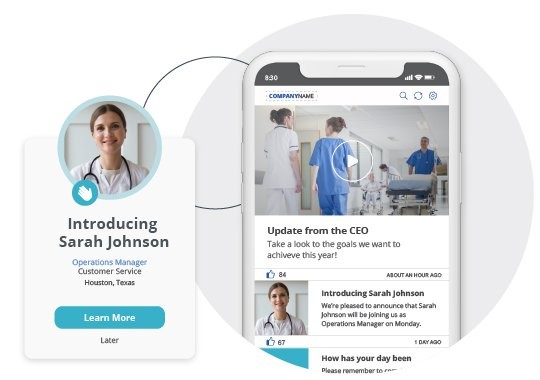
Communication technology in healthcare must evolve. Healthcare organizations must be able to send messages to all types of devices from a single communication system. An employee communication app is a great solution to connect your employees as it allows for agile communication.
With an app, you bypass email to get urgent communications to staff wherever they are, on whatever device they’re using through one multichannel platform within seconds.
It Helps Effectively Manage the Flow Of Patients
Managing the flow of patients in your practice is critical to running smooth operations and maintaining patient safety and satisfaction. But with nearly 40% of hospitals reporting unsafe patient volumes, waits, delays, and cancellations seem like a normal part of the care process.
Clinicians cite communication as the most challenging cause of patient throughput delays. Introducing more sophisticated communication technology in healthcare improves communication, coordination, and collaboration among all members of the treatment team.
When a hospital is at capacity, staff must work harder and smarter. Knowing when a hospital is about to reach capacity has significant benefits in the utilization of its resources.
Use Desktop Alerts as Capacity Alerts to inform teams that the facility is reaching maximum capacity and more beds are needed for admissions from the Emergency Department.
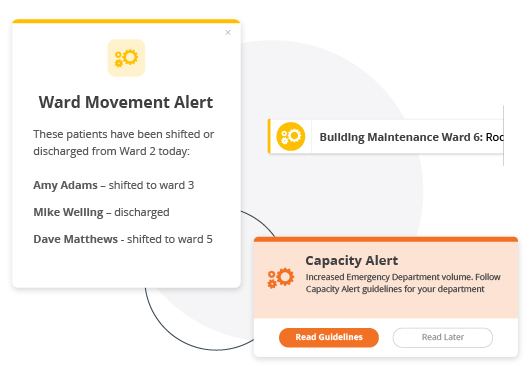
One study found that using escalation processes that alert the whole hospital has significant benefits in reducing hospital overcrowding, addressing rising occupancy, high patient throughput, and increased access block. Ward movement Alerts can circulate information on patient movement or discharges to staff instantly and widely.
Try our healthcare messaging for yourself with a free 30-day trial of SnapComms.
It Aids In Mobilizing On-Call Staff
Hospitals need to be able to deliver messages quickly, with immediate acknowledgment and response. But the healthcare industry has an average email open rate of just 21%. If information isn’t relayed to the right people quickly and accurately, mistakes are made, discharge is delayed, and patient care suffers.
Unfortunately, most hospitals rely on paper on-call rosters when a patient needs critical care. They use fax machines and emails to update staff on schedule changes, notify on-call staff, and to coordinate tasks.
Enhancing digital healthcare communications means staff can stay on top of who’s working when, where, and on what. Send instant pop-up Registration Alerts to on-call physicians so they can submit their availabilities at any location. Digitize on paper on-call schedules to allow for real-time scheduling across departments.
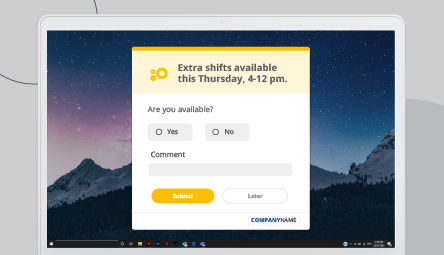
When high priority changes occur, rather than taking a chance with email send Alerts directly to staff screens for maximum visibility. You can even set messages to reoccur until seen to make sure important updates aren’t missed.
It Reduces Disruption
Frequent interruptions during care is a recurring problem for healthcare workers. Staff regularly work in hectic, demanding and time-sensitive environments where a short lapse in attention could lead to a fatal error. Researchers found that a distraction on just 10 seconds can cause someone to forget to carry out a task.
Interruptions can come from monitor alarms, questions from other nurses and overhead pages. They can impair a clinician’s ability to stay focused resulting in surgical mistakes and operational delays. One study found that nearly 96% of nurses who were interrupted during medication committed medication errors.
While some are necessary, most can be prevented or delayed. Desktop Tickers can be used to deliver important updates quickly and quietly to staff without interrupting care. One hospital introduced a protected hour for nurses to focuses solely on medical administration without fear of interruptions.
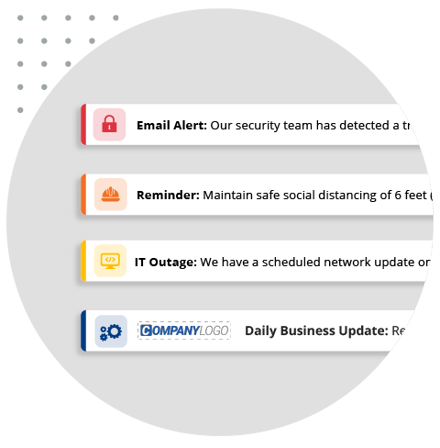
The regularity of interruptions points to a lack of understanding of process and the harmful effects of interruptions of patient safety. Increasing communication around the dangers of interruptions can help mitigate the dangers.
Use Digital Signage and Screensavers to reinforce guidelines around evaluating situations where they should and shouldn’t interrupt.
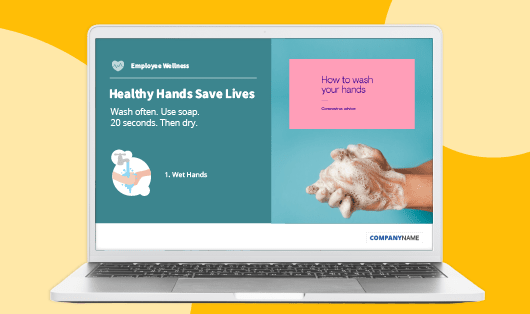
Improving healthcare communications with powerful communication technology is the key to improving patient flow. Managing patient flow effectively utilizes resources and stringent budgets and most importantly – means healthcare staff can deliver better patient care.
Contact us today to find out how our tools can help you - or download our new healthcare communication best practice guide.

